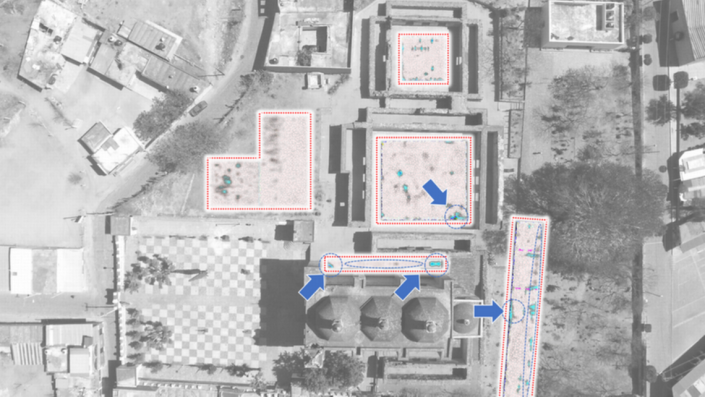Hundreds of years ago Francisco de Burgoa, a Dominican priest, shared the story of a group of Spanish missionaries who explored the ruins of an ancient church in Oaxaca, Mexico.
Burgoa claimed that the missionaries had discovered an underground temple with a vast system of tunnels and four interconnected chambers. Three of the four chambers held the tombs of high priests and kings, but the fourth was more perplexing.
Inside the last chamber was a door into a cavern that led deep underground — so deep, that the ancient Zapotec people believed it held an entrance to the Underworld, also known as Lyobaa.
Burgoa said the missionaries sealed all entrances to the underground caverns. Since then, only the palaces and churches have remained.
That is until recently when a group of archaeologists and experts conducted an extensive study of the site — and possibly discovered the legendary chamber.
The Project Lyobaa research team used different geophysical methods to scan the site and discovered several underground voids and anomalies that align with historical accounts of the system of chambers, according to a June 10 news release from The ARX Project.
Here’s what to know about the discovery.
The Mitla site
Mitla is one of Mexico’s best-known ruins, according to Britannica. Experts believe it was established as a sacred burial site sometime before 900 A.D. by the Zapotec people.
The site consists of five main groups of structures, including a Church Group, which is where the entrance to the Underworld is said to be located.
Mitla is in Oaxaca, which is about 315 miles southeast of Mexico City.
An extensive underground system
The team said its findings confirmed an extensive system of chambers and tunnels beneath the site’s church structures.
Archaeologists said their research discovered a large void directly beneath the main altar of the Catholic Church ruins at the site, which is where tradition says the hidden underground chamber is located. The void extends in a northwesterly and westerly direction and appears to be connected to another anomaly immediately north of the church.

Geophysical methods helped reveal voids that could have been underground chambers and tunnels, researchers said.
The study also revealed two east-west passages connected to the void. The passages were between 16 feet and 26 feet underground, researchers said.
Experts also said they identified a possible blocked entrance beneath the Catholic church’s main altar.
The discoveries are far more complex than the simple underground chambers that exist in other parts of the site, archaeologists said. Their depth and directional orientation indicate that they may not have originally been connected to the above-ground buildings.
The team said it already has planned a second round of investigations at Mitla and hopes to conduct further scans to learn more about the site’s history.
Source: Project Lyobaa




